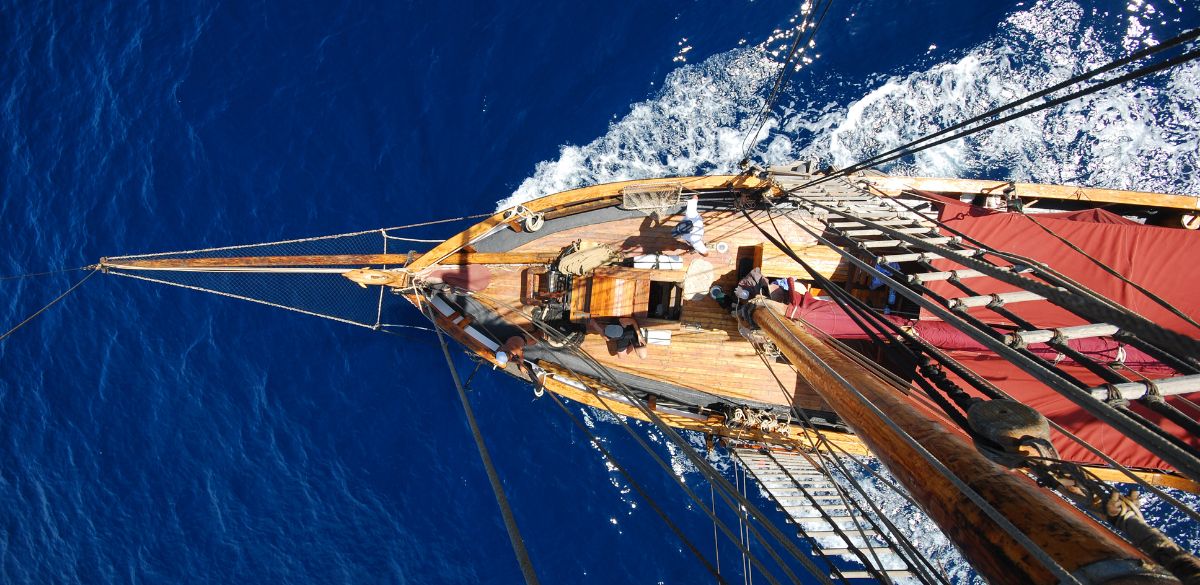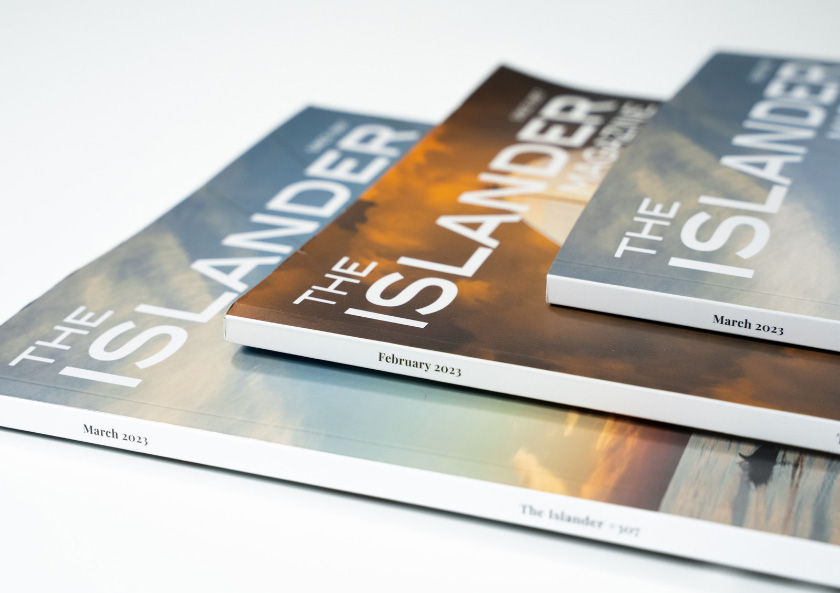The Islander reports with sadness that just days after this article was submitted, R/V Toftevaag sank after hitting an unknown object just 10Nm offshore from the shipyard where she just finished a long refit period. We were relieved to learn that all 6 crew were safely heli-lifted. This will not stop Alnitak from continuing their research and conservation operations and they can count on The Islander’s continued support.
Thor Heyerdahl said that “the oceans are not barriers, but roads”. For an institution like Alnitak, working on raising awareness among mariners and fishers to report and retrieve dangerous marine litter and ghost fishing gear adrift, this could not be more true. In the oceans we have highly mobile common species and also global threats, so spreading the message through sailing boats as the “Pelki” about what to do when you find an entangled turtle or dolphin makes a lot of sense.
After over three decades in the Mediterranean, Toftevaag is now also spreading the message. As she starts her new adventure towards colder latitudes of around 70 North, we will meet up with an old friend, Dr. Tiu Similä, joining the Arctic Lodge on the island of Andøya.
Here, north of the Lofoten Islands, Whale2Sea and Whalesafari, have been involved in research on sperm whales, long-finned pilot whales and Risso’s dolphins for many years. Led by Dr. Tiu Similä, studies include several collaborations, mainly with the University of Tromsø, but also with several other universities and institutions such as the Arctic Ocean Lodge. Now Alnitak is joining this consortium.
Toftevaag’s new home, the island of Andøya is known as the “Whale Kingdom of the North” because it is such a top whale watching spot in Norway.
The ocean area off Andøya is unique in several different aspects. The large deep-sea canyon, Bleik canyon, is located here and as it ends only 10 km from land it makes this island the place where deep sea comes closer to land than anywhere else in the Northeast Atlantic. Andfjord between Andøya and Senja is also a unique ecosystem with deep sea coral reefs. Most importantly, the ocean here is very productive due to nutrient rich currents, and the abundance of fish and squid attracts ten different whale species to this area to feed. Which whale species are present is dependent on what prey species are in the area, a factor which varies greatly throughout the year.
The focus of the research has been in gaining a better understanding of the behavioural ecology of male sperm whales. All sperm whales in the North Atlantic are born in tropical or subtropical waters where females spend their entire lives, while males leave to Arctic foraging grounds when they approach puberty. So maybe we also meet some of our big males from the Mediterranean here!
The research also focuses on understanding the social life, habitat use, diet, diving behaviour, vocal communication, pollutant levels, and many other aspects of the life of the sperm whales. Photo-identification, images taken of the fluke of the whales (which works like a fingerprint in humans) was initiated in the area already in 1987 and offers great insights into seasonal patterns in occurrence and also individual differences in the behaviour of the adult male sperm whales.
In recent years, the research has also focused on long-finned pilot whales and Risso’s dolphins, species also common to the Mediterranean. Pilot whales have always been seen in the area, but the number of sightings has significantly increased in recent years, probably linked to warming oceans and an “invasion” of mackerel to the area during summer. Risso’s dolphins are not part of the arctic fauna but have been seen in ever increasing numbers during summer months, also linked to the warming climate.
Toftevaag will be based on the same pier as the famous classical sailing yacht “Alma af Frøya”, a solid and sturdy vessel built to be prepared for managing Arctic conditions and fully equipped with SOLAS safety equipment. In 2026, Alma af Frøya will be running a very special expedition to study the effects of climate change and microplastic pollution in the Arctic and the famous “Northwest Passage”. For this purpose, Toftevaag has handed over the towed array hydrophone and the 5Gyre Manta trawl that we have been using in the Mediterranean with the “Todos por la Mar – Proyecto LIBERA”.





























0 Comments